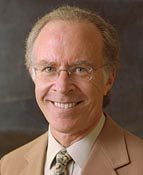

President’s Page
Eastman’s Legacy
The sesquicentennial of the birth of George Eastman is an opportunity to reflect on the University’s commitment to fulfilling the ideals of one of its greatest benefactors. By Thomas H. Jackson
 |
This year, Greater Rochester has been marking the 150th anniversary of the birth of George Eastman, born July 12, 1854. As we all know, his work transformed this city—and, certainly, our University.
During his lifetime, Eastman’s interest in our University—carefully nurtured at every turn by President Rush Rhees —put us on the road to becoming a truly national institution. Through Eastman’s beneficence, we gained first a top-tier music school, a groundbreaking medical school and hospital, and a new campus suitable for a new century.
But perhaps Eastman’s most remarkable, single philanthropic act came on March 14, 1932, the day he took his own life after writing that famous note: “To my friends: My work is done—Why wait?”
My academic background reminds me that words are given meaning by context. Without context, we might assume that Eastman was writing about the fact that he was no longer running Eastman Kodak (having stepped down as president in 1925) or about his debilitating illness. But a closer look makes one suspect he is mostly writing about the last great undertaking he set for himself.
Earlier on that day in 1932, he invited acquaintances over to witness the signing of a codicil to his will. With that signing, Eastman ensured that, with the exception of a few personal bequests, his entire estate would pass to the University.
It was his comfort in the correctness of that decision, I believe, that Eastman was referring to when he wrote that “my work is done.” And with that decision, on top of his prior gifts to higher education, Eastman became (and, to my knowledge, remains) the largest benefactor to higher education in the history of this country. His gifts over his life and at his death of some $50 million to the University would today be equivalent to a gift approaching, and perhaps far exceeding, $1 billion.
The sheer magnitude is astounding (particularly recalling his lifetime gifts to such other institutions as MIT, Tuskegee, and RIT), but the story of why he invested so much in this University, both during his lifetime and at his death, is equally important because it tells us so much about him.
Always the investor, Eastman made gifts that would ensure the vibrancy of his beloved community. He saw a great community as one that had culture, health (including dental health), and great education. This would be a community that could attract and retain a capable and sophisticated workforce. Eastman was unambiguously correct about the importance and durability of these investments: Today’s University is intimately linked to its surrounding community and, indeed, serves in the central role of employer and as generator of new ideas and technologies for local benefit, in ways that even Eastman may have underestimated.
By any factor, the University is a major force for Rochester, as Eastman envisioned. Our impact now is increased by virtue of our size as the area’s second-largest employer. But our contribution to our local community comes in yet another, powerful way: through our national (indeed, international) reach and reputation. As a result, we bring thousands of students here to experience the Rochester area for the first time. We attract, from the world, the greatest faculty and physicians to Rochester. Remarkable programs serving the community range from the Mt. Hope Family Center to Golisano Children’s Hospital. And we annually bring approximately $300 million dollars to the region for cutting-edge research—not only at the Laboratory for Laser Energetics and Medical Center, but in engineering, basic sciences, education, nursing, business, and music.
As Rochester—along with the United States—shifts from a manufacturing-centric to a service-centric economy, and with manufacturing increasingly focused on “high tech” areas dependent so centrally on new ideas, the University will increase in its importance to the Rochester area. We remain, just as we were in Eastman’s time, a center of culture, of health care, and of education—all central elements to Rochester’s future. But we are now so much more.
We in the University community are all heirs to George Eastman’s vision. We are also the stewards for the University’s future with implications that are both global and local. What a legacy—and what a challenge!
